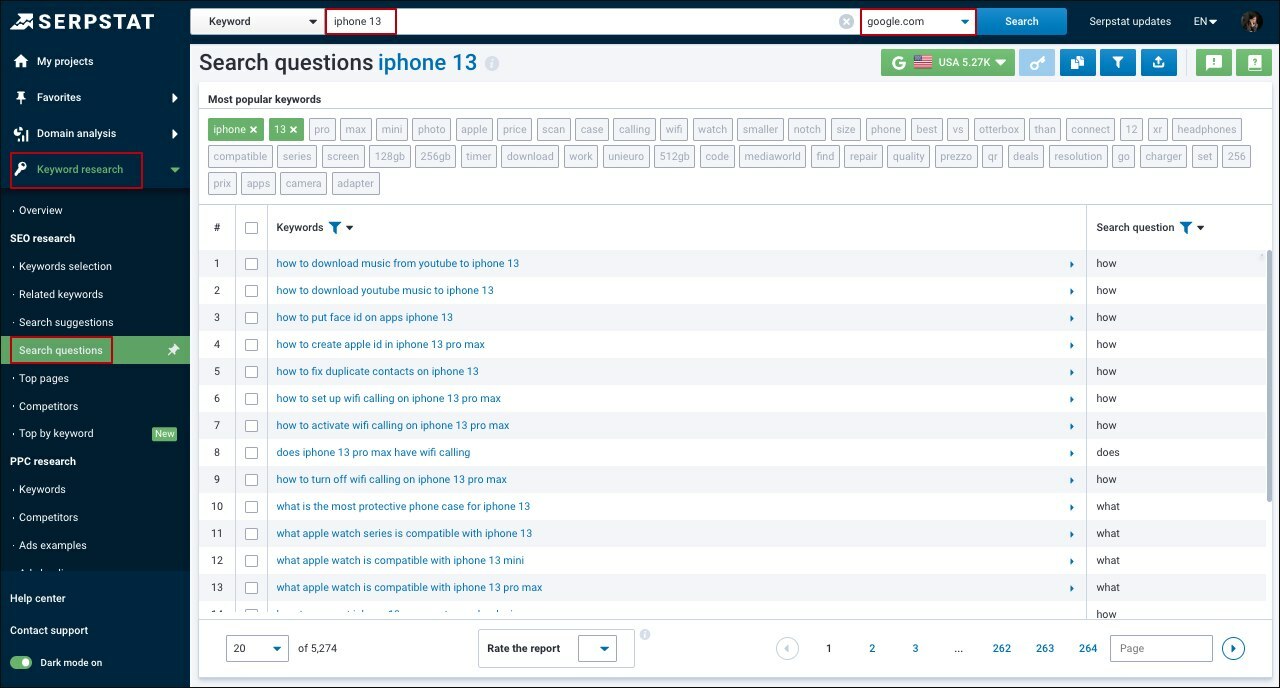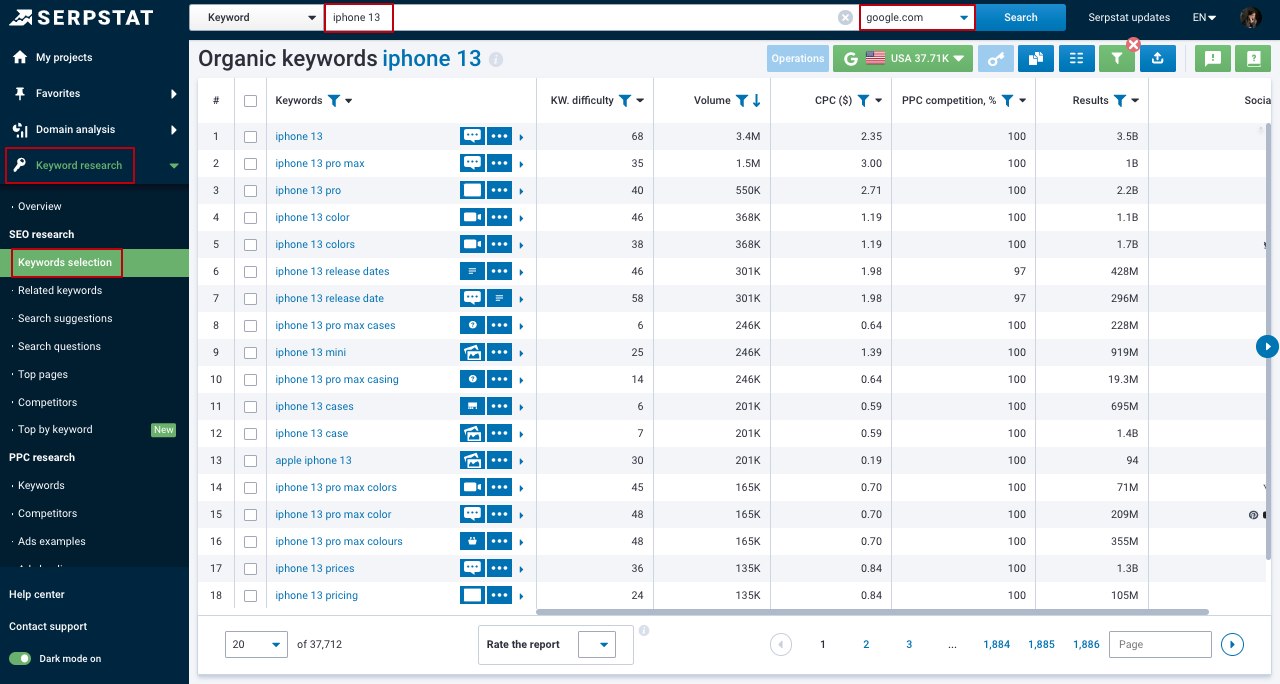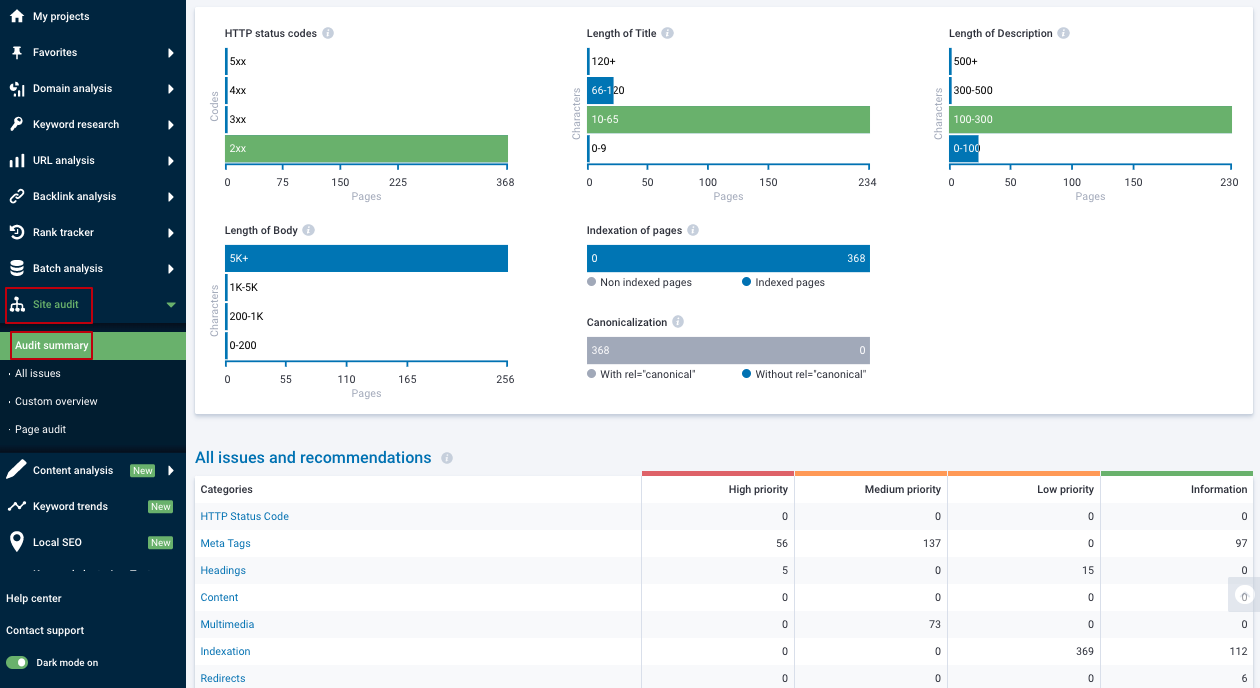Start Exploring Keyword Ideas
Use Serpstat to find the best keywords for your website
Content Strategy vs. SEO Strategy: How to Decide Which Comes First

However, making a choice is vital for the success of your business and what is even more important is to make the right choice, as the wrong choice can break your entire digital marketing strategy.
Today, we'll give you the lowdown on everything you need to know about SEO and content marketing to help you make the right choice. Moreover, this article will be supplemented by the comments of the following experts from our Twitter Chat:
- What is SEO?
- Why do you need SEO?
- What is Content Marketing?
- Why do you need Content Marketing?
- How do you decide what to do first?
- Why should you develop an SEO strategy first?
- How to build a successful SEO strategy?
- Why should you create a Content Marketing strategy first?
- How to create a successful Content Marketing strategy?
- How to integrate SEO and Content Marketing strategies?
What is SEO?
- Keyword research: Simply put, keywords are the questions that a user puts into the search bar to find answers. Understanding keywords is crucial for search engine rankings as it tells you about the user intent and creates content for your website accordingly. Using the right keywords also helps the search engine show the right website to the user, increasing its credibility.
- The website design: Your website's design and structure play a vital role in its search engine ranking and overall user experience. Your website must have a responsive design and a user-friendly interface so that the user can find what they are looking for easily.
- Page speed: Another crucial element of your website's ranking factor is speed. If your website doesn't load within seconds, the user will leave and find another source of information. Therefore, Google considers it an essential element of your website.
- Link building: Links are a way for the search engine to determine the trustworthiness of your website. So you need to have backlinks from sites with good authority. Having backlinks makes your website more reliable, increasing your chances of ranking higher on the SERP.
We can divide all these elements into three major parts that make your SEO strategy.
- On-page SEO: On-page SEO is that part of your SEO where you improve the content on your website to make it rank better. Such factors include adding keywords, creating better titles, adding the newest information, etc.
- Off-page SEO: Off-page SEO focuses on everything that goes beyond your website, such as creating backlinks.
- Technical SEO: Technical SEO involves the technical aspects of your website, such as improving the URL, adding Schema markup, and enhancing security by adding SSL.
Why do you need SEO?
- It enhances user experience: Implementing the best SEO practices for your website improves looks, speed, design, and value-adding content. Which in turn increases the user experience of the visitor.
- It puts you on the map: Nearly 90% of the internet experience begins with a search engine. So when you have SEO, you are more likely to show up on a search result for a relevant keyword, and people will visit your website more. It helps people know more about your business and increase your brand awareness and reach.
- It helps other marketing strategies: SEO greatly helps in different marketing strategies, such as content marketing, social media campaigns, and ad campaigns. Therefore, you need to make your SEO game strong to succeed in your digital marketing goals.
What is Content Marketing?
~Doug Kessler
Why do you need Content marketing?
- It helps build trust: The most significant benefit of good content is that it shows the audience what your brand is all about. It enables you to connect with like-minded people who appreciate your work and want to become a part of it.
- It increases conversions: No one chooses a brand that they can not relate to at some point. And without content marketing, you cannot convince them to use your product or service.

- It gives you better traction on social media: Social media is one digital platform with a tremendous reach. However, the only thing that sells on social media is good quality content to keep users entertained and educate them. With engaging content, you can quickly grab your target audience's attention and loyalty on social media with a good content marketing strategy. Here is how you can fix your social media content:
How do you decide what to do first?
- Are you running a B2B or B2C business?

- Is your website live?
If your website is already live, analyze the ranking content and build your SEO strategy around it for the best results.
- What are your digital marketing goals?
However, if you aim to achieve enhanced social media reach, build brand awareness quickly, and generate natural backlinks for your website, go with a captivating content marketing strategy.
Why should you develop an SEO strategy first?
- SEO gives you fantastic content ideas
- SEO directs passive traffic to your website
- SEO enables you to track your competitors

Want to get a personal demo, trial period, or a bunch of successful use cases?
Send a request and our expert will contact you ;)
All that data you collect can help derive the best SEO strategy and create an excellent content marketing plan.
- Content without SEO is futile
- SEO is more than just high-quality content
How to build a successful SEO strategy
Step # 1: Measure your existing SEO performance
Suppose you have a website that you want to create an SEO strategy for. The first thing you need to identify is how your current site is performing. Doing so will help you discover the issues and build your strategy to improve the shortcoming and add missing things.

Don't look further than your competition if you find yourself clueless about where to start with your SEO. Analyze your competitor's SEO strategy to get an idea of what works in your industry.
- Start with making a list of all your prominent competitors in your industry segment using organic research tools with competitor options such as Serpstat's Competitor Analysis Tool:
- Find the pages of such competitors that generate the highest traffic in terms of organic search.
- Then identify the keywords used on these pages. It will give you an idea of what keywords they are ranking for and which ones will work for you.
- You should also compare the backlinks you and your competition have to eliminate the gap in your new strategy.
Product features can almost always be copied. And if you're only trying to do the same as your competitors in SEO, and relying on price: all it takes is ONE competitor who can sell cheaper.
That's a good reason to invest in increasing trust signals, and in growing brand authority through the various ways available to you, inside and outside the world of SEO, on-, and inside your website (technical SEO is your buy-in), and in other places.
- your team's expertise;
- functionality of your products;
- your return policy;
- your pricing model.
Once you have identified your uniqueness, focus on why it's important to them. Match your unique features with its ultimate benefits, and the task(s) it helps with.
Now you know what works in your industry and where you stand, you can formulate the goals you want to achieve with your SEO strategy. Set clear goals that are quantifiable and measurable through tools.
Then set the daily parameters or KPIs you can measure and track to gauge your progress every step of the way.
After the goals are established, you can move to the next element, which is keyword research. Here, you need to define the primary keywords that you will use for specific pages that you want to get the most traffic on. These pages are also called pillar pages. These pages have clusters of keywords that you want the most traffic for.
Once you have your keyword list and pillar pages, the next step is to create content according to these keywords. However, before making new content from scratch, you need to analyze the existing content and determine what is usable. What should be deleted and what to update? It also helps you identify the type of content your audience likes and build new content according to it.

Once you have scaped up whatever you can of your old content and removed duplicates and unusable content. The next step is to create content that suits the keywords and cluster topics you have formed for your new SEO strategy. Ensure that the content is of exceptional quality and adds value to the reader.
Your content should also satisfy the user intent rather than just fulfilling the keyword requirements to rank on the search engine. Having good quality content is key to ensuring that your traffic turns into conversions and leads.
After creating and posting the content, the next step is to get other on-page SEO factors correct. It includes adding meta descriptions, title tags, and internal links to the content, optimizing the images, and much more. SEO tools can provide you with suggestions to optimize your on-page SEO further.

Even after doing on-page SEO, your site still can have some underlying technical issues. Such issues won't let the search engine crawl and index your website correctly, affecting your ranking. You can conduct a manual technical SEO audit to find the underlying issues and fit them. You should also add schema markup to your website to enhance its rankings.
You can move on to off-page SEO when you have taken care of technical aspects and on-page SEO. Off-page SEO is all about getting backlinks for your website through various means to increase the credibility of your website. Some of the most prominent techniques include:
- digital PR;
- broken link building;
- the skyscraper technique (making your website the only one that's talked about by adding trending content);
- using link-building tools;
- paid link building and others.
Once everything is in place, you can focus on measuring the results. Set up analytics mechanics such as Google Analytics to analyze the performance of your SEO strategy. Measure all the KPIs against the benchmarks set in the beginning. It will help you create a progress graph of your strategy efficiently. Make changes to your tactics where you are not meeting your goals.

The ones that spend more or more often, that consume fewer resources (sales, customer support), the ones that suggest your product all the time, any characteristic that you consider great in your customers.
List them so you can analyze them later.
1. Keyword research is usually the first step of any legit SEO strategy.
2. Analyze your competitors' SEO strategies.
3. Set goals.
Join our #serpstat_chat!
Join #serpstat_chat to discuss the questions of practical SEO, trends, and updates with SEO experts.
We conduct them every Thursday at 2 pm ET | 11 am PT on our Twitter channel by hashtag #serpstat_chat.
Why should you create a Content Marketing strategy first?
- Rank your content without SEO.
- It helps drive targeted traffic.
- You don't get tossed off as soon as the algorithm changes.
- It enables you to discover topics before they are popular.
How to create a successful Content Marketing strategy?
The first thing you need to do is set your content marketing goals. It can be to create brand awareness, gain more leads, or generate sales and conversions. Whatever your goal, you need to identify and set it as the content you generate will need to be in accordance with that. Ensure that your goals are measurable and trackable, and set KPIs to measure them each step of the way.
One of the most crucial elements of your content marketing strategy is the target audience for creating the content. If you don't understand what motivates them, what their pains are, and what they like or dislike, you won't be able to influence them. Therefore, you should understand your target audience in depth before moving on to the actual content creation part.
The CEO/MD/Directors' list of competitors is not what you are after. The answer you want to get is what they consider an alternative to your solution. And they could have different views on how you actually help them to solve a problem.
Behavioral segmentation, habits, frequent actions, specific needs for a product/service, and value to the company are typically measured by Customer Lifetime Value (CLV).
For B2B, what industry the customer belongs to, the number of employees, or the revenue size.

Google can tell you what people are searching for. Make sure to check social media groups too. They may provide more info and let you know what resonates.
DO NOT underestimate the value of REDDIT as an audience/topical resource and content distribution platform!
Once you know your target audience and how your buyer's journey works, you need to do SEO analysis to get the right keywords, topics, and topic clusters for your website content. It will help you further segment your content according to the buyer's intent.
Now you have everything you need to find relevant topics for your content plan for blog posts, website copies, social media campaigns, and other marketing channels. You can also analyze the existing content to make changes to it according to the new content strategy. Some of it must be removed before you need to add the new content.
Once the new content is created, you can publish it on your website and other mediums. You should also analyze the published content to see the engagement level of your content. Always keep optimizing your published content at regular intervals to ensure that your content stays relevant time after time.
- all interactions with the audience should be directed to the people described in the strategy: ads, posts on socials, etc.;
- wherever there is a description of the product, emphasize its strengths compared to competitors;
- focus on promotion for those keywords that are most relevant to your product and audience pains.
How to integrate SEO and Content Marketing strategies?
The best way to combine both strategies is to ensure that both approaches achieve the answer to two questions, which are:
- What is your buyer's journey?
- What are the troubles they face along the journey?
Make your SEO strategy strong enough to maximize your content's potential. Once your SEO is strong enough, you can identify any unexplored content topics that you can use to gain better rankings and conversions with less competition.
Personal demonstration
Our specialists will contact you and discuss options for further work. These may include a personal demonstration, a trial period, comprehensive training articles, webinar recordings, and custom advice from a Serpstat specialist. It is our goal to make you feel comfortable while using Serpstat.
Wrapping up
However, understand that in the long haul, you will need both, no matter your starting position. So, make the decision and work towards achieving your goals!
Speed up your search marketing growth with Serpstat!
Keyword and backlink opportunities, competitors' online strategy, daily rankings and SEO-related issues.
A pack of tools for reducing your time on SEO tasks.
Discover More SEO Tools
Text Analysis Tool
Unlock the power of your text data with our advanced Text Analytics Tools
AI Content Detection
Ai Content Checker – realize if the text is AI-generated
AI Text Generator
Try our AI Content Writer tool and streamline your content creation process
AI Content Tools
AI Content Marketing Tools – simplify and optimize the content creation process
Recommended posts
Cases, life hacks, researches, and useful articles
Don’t you have time to follow the news? No worries! Our editor will choose articles that will definitely help you with your work. Join our cozy community :)
By clicking the button, you agree to our privacy policy.



















